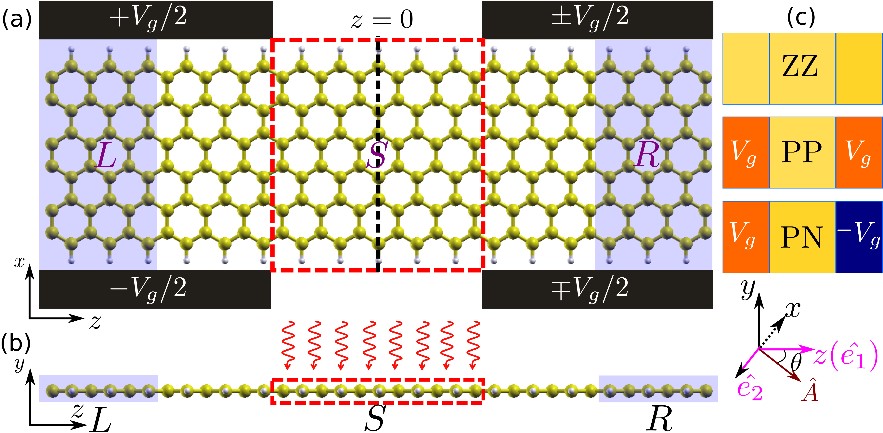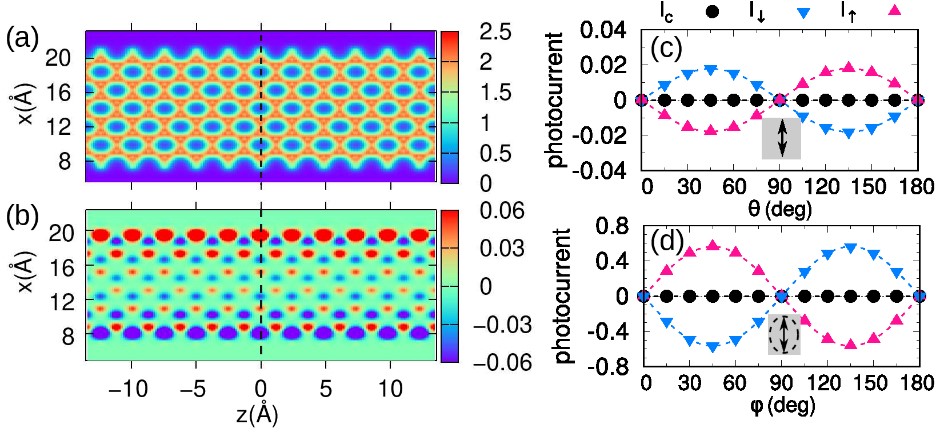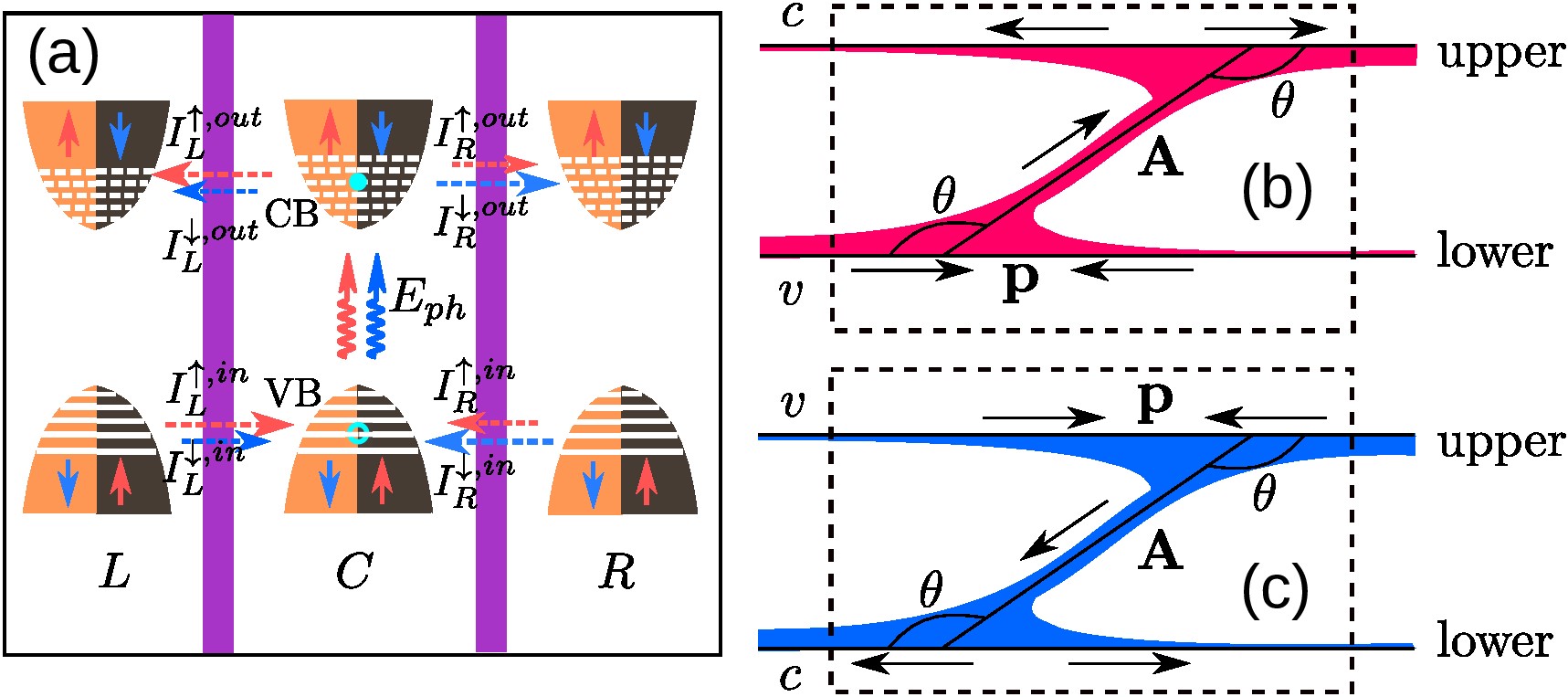How to produce pure spin current without any accompanying net charge current is a very important research topic in condensed matter physics and spintronics as it would ensure low dissipation in information processing and storage. Usually, pure spin current can be produced by optical illumination in systems with broken spatial inversion symmetry with special photon energy or polarization angle. But this is practically difficult.
Recently, a research group led by Prof. ZHENG Xiaohong the Institute of Solid State Physics (ISSP), Hefei Institutes of Physical Science (HFIPS), proposed a new and robust route to achieve pure spin current by photogalvanic effect with two-dimensional centrosymmetrical antiferromagnets. The research has been published in npj Quantum Information.
According to first-principle design, they proposed centrosymmetric 2D antiferromagnets which was considered as perfect candidates for constructing spin photogalvanic devices in order to produce pure spin current.
"Thanks to the preservations of the structural inversion symmetry and spin polarization antisymmetry in these materials,” said lead author JIANG Peng, a doctor student in this lab, “the charge photocurrent induced by the the spin photogalvanic effect (PGE) is definitely zero, while finite photocurrents for both spin channels with opposite flow directions and equal magnitude are still generated, giving rise to a pure spin current.”
As the first application of this idea, a dual-gated photoelectric device was constructed with a zigzag graphene nanoribbon (ZGNR) which has intrinsic antiferromagnetic (AFM) coupling between the two edges and spin degenerate band structure.
They succeeded. The pure spin current it generated is neither dependent of the photon energy, nor dependent of the polarization feature of the applied polarized light. Moreover, it demonstrated that spin-splitting band structures are not necessary.
Researchers think that the device may work in the sense that both fully spin polarized current and pure spin current can be generated, by tuning the dual gates applied to the two leads.
This PGE-induced mechanism can be extended to other 2D centrosymmetric magnetic materials with spin polarization antisymmetry, providing a new way for the experimental generation of pure spin current in the photoelectric field.
This work was supported by the National Natural Science Foundation of China. The calculations were performed in Center for Computational Science of CASHIPS, the ScGrid of Supercomputing Center, and Computer Network Information Center of Chinese Academy of Sciences.
Link to paper: Two-dimensional centrosymmetrical antiferromagnets for spin photogalvanic devices

Fig. 1. The proposed spin photogalvanic device model (a-b) based on 6-ZGNR and its three gate configurations (c). (Image by JIANG Peng)

Fig. 2. The charge density (a) and spin density (b) of 6-ZGNR. The spin dependent and total charge photocurrents under the irradiation by (c) linearly and (d) elliptically polarized light. (Image by JIANG Peng)

Fig. 3. The schematic plot of the photocurrent generation in AFM ZGNR. (Image by JIANG Peng)
Contact:
ZHAO Weiwei
Hefei Institutes of Physical Science (http://english.hf.cas.cn/)
Email: annyzhao@ipp.ac.cn
 Tel: +86-551-65591206
Tel: +86-551-65591206
 Fax: +86-551-65591270
Fax: +86-551-65591270
 Emai: zhous@hfcas.ac.cn
Emai: zhous@hfcas.ac.cn
 350 Shushanhu Road
350 Shushanhu Road